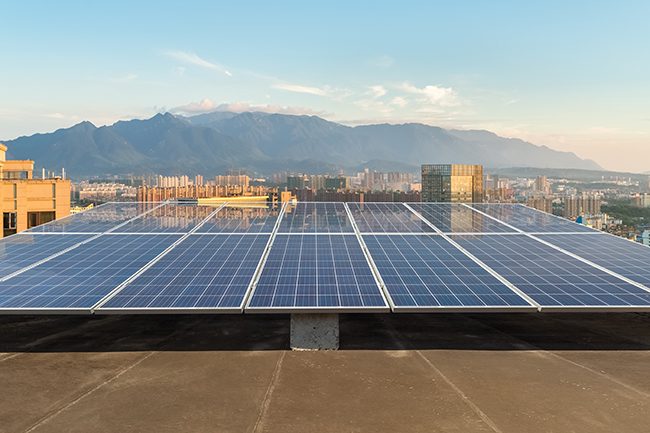Choosing the Right Distributed Energy Resource
The decision on whether or not to invest in distributed energy resources is complicated. Evaluating all aspects, including cost, consumption metrics, resource availability, personal goals, and reliability needs, is important to ensure the best outcome.
The global energy landscape is evolving at an unprecedented pace, with increasing emphasis on sustainable and resilient energy solutions. Distributed energy resources (DERs) have emerged as a vital component in this transformation, offering businesses and individuals the opportunity to generate, store, and manage their own energy. As the demand for renewable energy grows, the decision to invest in DERs becomes crucial. This article explores the key considerations in selecting the optimal DER strategy, specifically focusing on the decision between grid-tied and off-grid systems, and whether it’s best to invest now or delay the investment.
Understanding Grid-Tied and Off-Grid Systems
Before diving into the decision-making process, it’s essential to understand the fundamental differences between grid-tied and off-grid systems.
Grid-Tied Systems. These systems are connected to the main electrical grid, allowing users to generate their own energy through sources such as solar panels or wind turbines. Excess energy can be fed back into the grid, often earning users credits or compensation. Grid-tied systems are generally more cost-effective upfront due to reduced energy storage requirements.
Off-Grid Systems. Off-grid systems operate independently of the main electrical grid. They require energy storage solutions (typically batteries) to ensure a continuous power supply when renewable sources are unavailable. While providing greater energy independence, off-grid systems often have higher initial costs due to the need for storage capacity.
Decision-Making Considerations
The decision to invest in DERs involves a careful evaluation of multiple factors, including financial considerations, energy needs, environmental goals, and the level of resilience desired. Here’s a breakdown of the key considerations to help guide this decision.
Financial Aspects. Grid-tied systems generally have lower upfront costs, as there’s no need for large energy storage solutions. Off-grid systems, on the other hand, require significant investment in batteries or other storage technologies. While the initial investment for off-grid systems might be higher, they offer greater long-term savings by reducing or eliminating reliance on the grid. Off-grid systems can shield users from rising utility costs and potential grid disruptions. You can calculate the return on investment (ROI) based on energy savings, potential grid feed-in tariffs, and incentives available in your region. Consider the payback period for each system to determine the optimal investment timeline.
Energy Needs. Analyze your energy consumption patterns to determine the size and capacity of the system you need. Consider future growth in energy needs and the potential for energy-efficient upgrades in your property. Assess the solar potential, wind patterns, and other renewable resources at your location. An area with abundant sunlight may be ideal for a grid-tied solar system (Figure 1), while regions with intermittent energy sources may benefit more from off-grid systems with energy storage.
 |
|
1. Rooftop solar panels can be a great distributed energy resource option for homes or commercial and industrial facilities. If grid-tied, power can often be fed back to utility companies to earn either credits or compensation. Source: Envato Elements |
Environmental Goals. If reducing your carbon footprint is a primary goal, both grid-tied and off-grid systems can be environmentally beneficial. Grid-tied systems can offset the carbon emissions of your energy consumption, while off-grid systems contribute to reducing overall demand on the grid. Off-grid systems offer the highest level of energy independence and can be a desirable option for individuals or businesses aiming to minimize their reliance on fossil fuels and centralized energy systems.
Resilience and Reliability. Consider the historical reliability of the grid in your area. If frequent power outages are a concern, an off-grid system with energy storage can provide essential backup power, ensuring uninterrupted operation. Off-grid systems are inherently more resilient during natural disasters or grid failures. If maintaining power during emergencies is a priority, an off-grid solution may be the better choice.
Now or Later?
The decision to invest in distributed energy resources involves a careful evaluation of financial, energy, environmental and resilience factors. The choice between grid-tied and off-grid systems depends on your specific goals and circumstances. While grid-tied systems may be more cost-effective upfront, off-grid systems offer greater long-term savings and energy independence.
Determining the optimal timing for investment is equally important. If you are ready to reduce your energy bills, decrease your carbon footprint, and enhance your energy resilience, investing in DERs sooner rather than later can be a wise decision. On the other hand, delaying the investment might allow you to leverage future advancements in technology, potentially leading to more efficient and cost-effective solutions.
Ultimately, the choice between grid-tied and off-grid systems, and the timing of investment, should align with your energy goals, financial capacity, and commitment to building a sustainable and resilient energy future. Consulting with energy experts and considering all relevant factors will empower you to make an informed decision that best meets your unique needs.
—Dan Nordloh is senior vice president, general manager of EnTech Solutions.